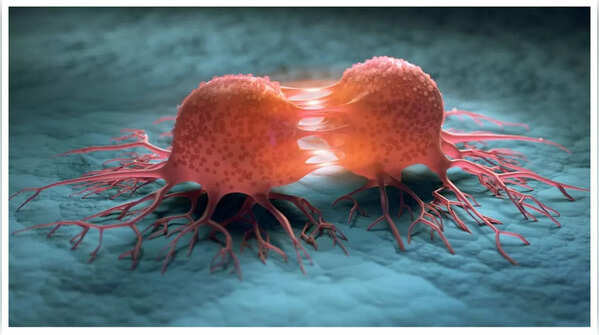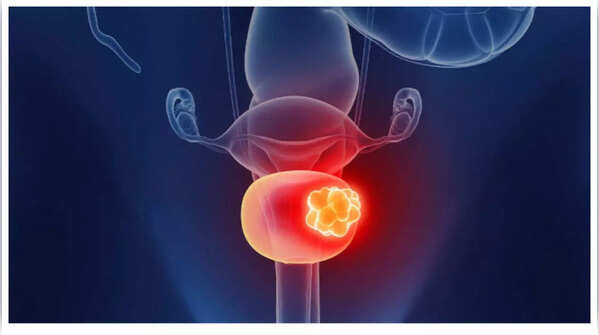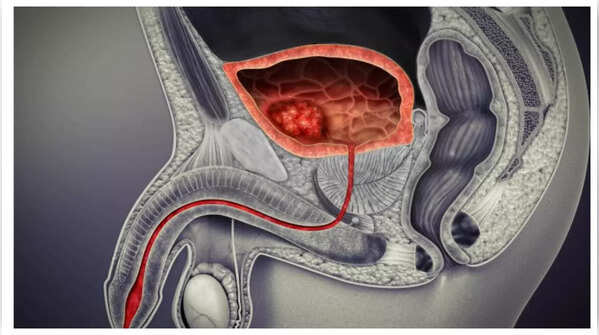Bladder cancer, characterized by the formation of cancerous cells within the bladder tissues, is more prevalent in males over the age of 55. While blood in the urine is widely recognized as an initial and crucial indicator, other less conspicuous symptoms can be easily dismissed, especially in the early stages. Here are several subtle symptoms that should prompt immediate attention, although they are not definitive signs of the condition.

An early indicator of bladder cancer can be frequent urination. This may manifest as needing to urinate more often than usual, even without increased fluid intake, or experiencing a sudden, intense urge to urinate despite the bladder not being full. These symptoms are often mistaken for a urinary tract infection or overactive bladder, delaying recognition of a potential cancer. Persistent changes or the presence of additional symptoms warrant medical evaluation to identify any irritation or growths within the bladder.

Pain or a burning sensation during urination is another symptom often attributed to common infections like UTIs. However, bladder cancer can induce inflammation or irritation of the bladder lining, resulting in discomfort during urination. Unlike typical UTIs that respond to antibiotics, cancer-related pain may persist or recur. It's important to consult a doctor if painful urination is accompanied by other symptoms such as blood in the urine or frequent urination.

Bladder cancer can cause a persistent feeling of needing to urinate immediately, even when the bladder is nearly empty. This sensation can be frustrating, as it doesn't subside after voiding. The symptom, often mistaken for a UTI, is caused by tumors or abnormal growths in the bladder that irritate nerves or reduce bladder capacity, sending false signals to the brain. Persistent or worsening sensations should be promptly evaluated to identify potential bladder abnormalities, including cancer.

While bladder cancer may not initially cause pain, discomfort or aching in the lower back or pelvic area can emerge as the disease progresses. This pain is often dull and persistent, and may be mistaken for muscle strain or other common conditions. Pain in these areas can signify that the cancer has spread deeper into the bladder wall or nearby tissues. Unexplained lower back or pelvic pain, particularly when accompanied by urinary symptoms, should not be ignored.

Although visible blood in the urine is a well-known symptom, urine may appear normal yet contain trace amounts of blood detectable only through lab tests. This condition, known as microscopic hematuria, may present as an "off color" rather than a distinct pink or red hue. Due to the absence of obvious signs, microscopic blood in the urine often goes unnoticed unless a urine test is conducted for other reasons. Individuals with risk factors such as smoking, exposure to harmful chemicals, or a family history of bladder cancer should undergo regular urine tests to facilitate early detection of these hidden signs.

Cultivating healthy habits such as regular exercise, adequate hydration, and proper nutrition are good for bladder cancer prevention.

Adopting a good and nutritious diet contributes to a long and healthy life, minimizing the risk of major health complications.
Sources: Mayo Clinic, Cleveland Clinic, The National Cancer Institute
Newer articles
Older articles
 Indian Astronaut Joins ISS: Shukla's Mission Ushers in New Era for India's Space Program
Indian Astronaut Joins ISS: Shukla's Mission Ushers in New Era for India's Space Program
 Ashada Gupt Navratri 2025: Unveiling Dates, Sacred Rituals & Hidden Significance
Ashada Gupt Navratri 2025: Unveiling Dates, Sacred Rituals & Hidden Significance
 Rishabh Pant's Unconventional Batting Redefining Cricket, Says Greg Chappell
Rishabh Pant's Unconventional Batting Redefining Cricket, Says Greg Chappell
 Moto G54 Price Slashed in India: Check Out the New, Lower Cost
Moto G54 Price Slashed in India: Check Out the New, Lower Cost
 JPG to PDF: A Graphic Designer's Guide to File Conversion and Quality Preservation
JPG to PDF: A Graphic Designer's Guide to File Conversion and Quality Preservation
 Van der Dussen to Captain South Africa in T20I Tri-Series Against New Zealand and Zimbabwe
Van der Dussen to Captain South Africa in T20I Tri-Series Against New Zealand and Zimbabwe
 'The Traitors' Star Apoorva Mukhija Accuses Sudhanshu Pandey of Misogyny and Verbal Abuse After On-Screen Drama
'The Traitors' Star Apoorva Mukhija Accuses Sudhanshu Pandey of Misogyny and Verbal Abuse After On-Screen Drama
 20 Minutes to a Healthier Brain and Heart: Neurologist's Simple Strategies to Combat Cholesterol, Blood Pressure, and Dementia Risk
20 Minutes to a Healthier Brain and Heart: Neurologist's Simple Strategies to Combat Cholesterol, Blood Pressure, and Dementia Risk
 TSMC Regains Top 10 Value Ranking Driven by AI Chip Demand
TSMC Regains Top 10 Value Ranking Driven by AI Chip Demand
 Popular Finance YouTuber "financewithsharan" Hacked: Security Measures to Protect Your Account
Popular Finance YouTuber "financewithsharan" Hacked: Security Measures to Protect Your Account